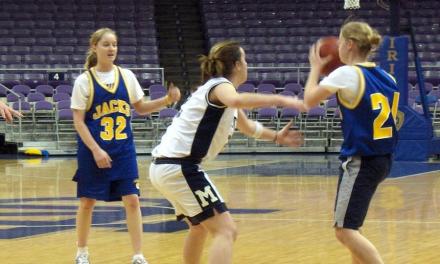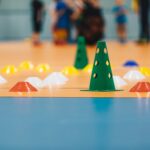PE teaching can sometimes feel like the most rewarding yet most challenging role around. Constantly having to adapt to meet the needs of the students and overcome barriers to participation are par for the course. So what are the biggest challenges in a PE lesson, and how could we overcome them?
Fitness and engagement
The first issue you may find is that some of your pupils aren’t physically able to take part in lessons due to low fitness or ability levels. Some pupils may also be reluctant to take part in PE lessons due to concerns over their fitness levels, feelings of embarrassment or a lack of confidence.
“Did you know? A Youth Sport Trust survey found that 73% of teachers reported children returning to school after lockdowns with lower levels of physical fitness.”
To overcome this challenge, PE teachers need to create a positive learning environment, where pupils feel safe and empowered to challenge themselves without fear of failure or embarrassment. Planning fun and engaging activities which improve fitness are key, and gradually increasing high activity levels within PE lessons allows pupils to challenge themselves further over a period of time.
As pupils go through secondary school, their levels of physical activity may start to decline. If self-confidence and self-belief are instilled in pupils in PE lessons, pupils will be more likely to continue to engage in physical activity in lessons and beyond.
In England, only 21% of boys and 16% of girls meet minimum PA recommendations for their health, a trend that remains in decline. Half of the UK’s population of 11–25 year olds (4.5 million) are inactive.
Kit
Pupils without an appropriate kit may be one of the largest obstacles to overcome. Look back to one of our previous blogs for some tips on how to overcome this issue.
Curriculum pressures
Unfortunately, research by Dobel et al., (2021) shows that some of our pupils only engage in physical activity through PE lessons. This means that their timetabled lesson becomes even more precious, and the time must be utilised to the maximum. Fight to ensure your school offers two hours of PE to every student, every week, and maximise this time to ensure that as much of the lesson as possible is active. Make changing time more efficient with some tips from our previous blogs.
“Some groups of pupils, including those from ethnic minority backgrounds and those with special educational needs and/or disabilities (SEND), report lower levels of physical activity”
Also, take the time to review your practice, both at the lesson level and the curriculum planning level. Ensure that the needs of your pupils are catered for within the curriculum and that a range of sports which are likely to ‘hook’ pupils in are covered. Get to know your classes and adapt your practice to include more of what works in engaging the pupils in physical activity, and less of what doesn’t work.
Although there are and will continue to be barriers to Physical Education for pupils, our role is to engage and inspire pupils to choose to take part in sport and physical activity. This can be achieved by being a positive role model, ensuring pupils feel empowered to take part, and by ensuring your curriculum is well planned and meets the needs of the students.
If you would like some information on PEOffice and how it can help you and your department then call the team on 01909 776 900, send an email to mail@peoffice.co.uk or book a free online demonstration here.









